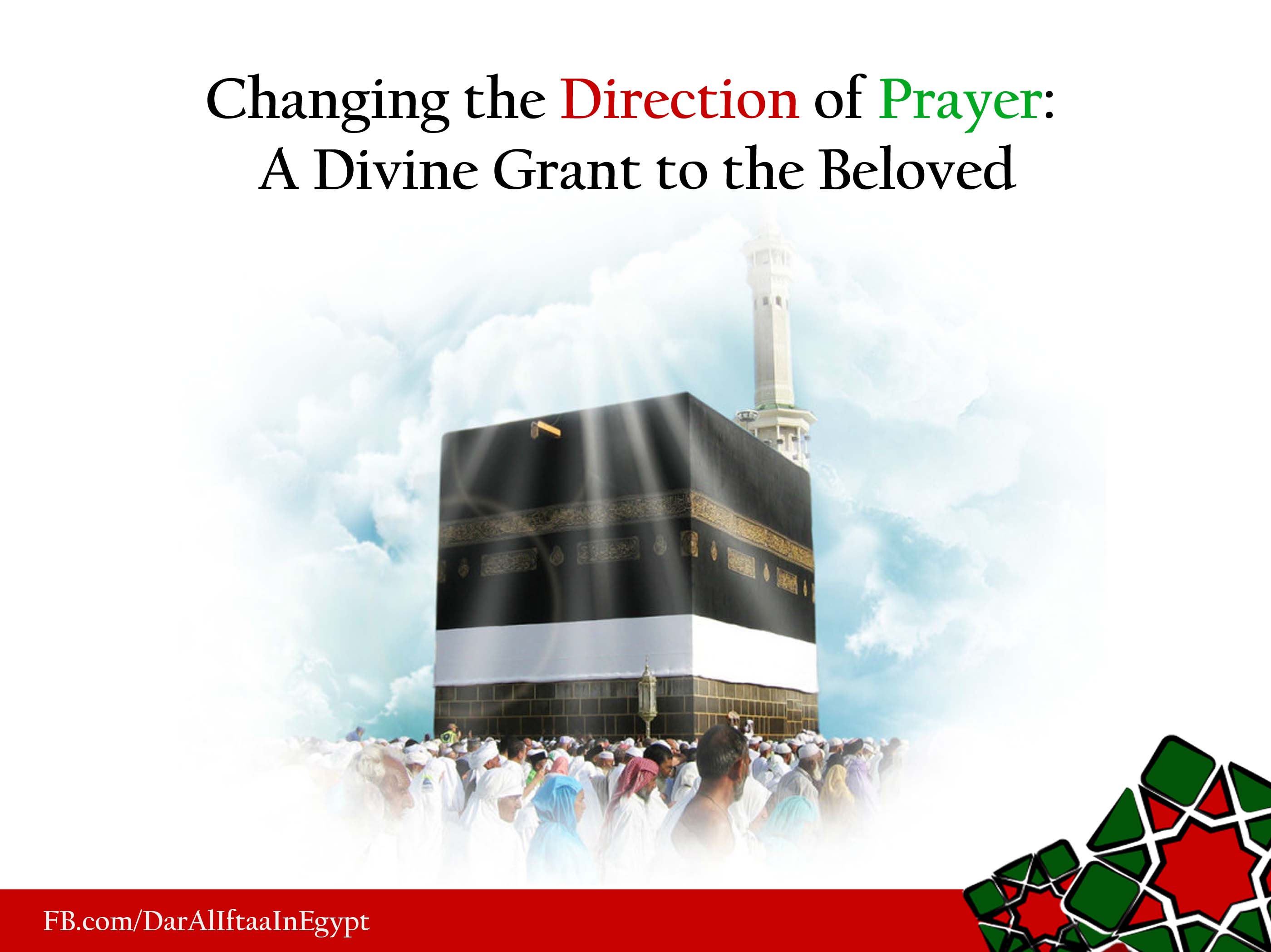Changing the Direction of Prayer: A Divine Grant to the Beloved

The incident of changing the direction of prayer from Jerusalem to Makkah in the 15th of the Hijri month of Sha’ban does not only carry a geographical significance but its spiritual connotation transcends the physical shift of the location of prayers.
Prophet Muhammad (peace be upon him) during his stay in Makkh for 13 years was heading towards Jerusalem during his prayers yet his face was always directed to the Ka’bah as the direction of the Ka’bah was aligned with that of Jerusalem. When the Prophet moved to Madinah he continued praying in the direction of Jerusalem for 17 months yet he was disheartened by the fact that he could no longer face the Ka’bah during his prayers as the new location of Madinah does not allow him to align with the Ka’bah while offering his prayers in the direction of Jerusalem.
Although in his heart the Prophet missed dearly heading towards the Ka’bah as it holds a great spiritual impact on him, he, out of utter politeness and refined manners, did not supplicate to Allah the Almighty to change the direction of prayers. The max the Prophet would do is to keep looking at the sky hoping for Allah’s mercy to descend on him and wishing if Angel Gabriel would come down with a divine order of changing the direction of prayer towards the Ka’bah. Allah the Almighty narrated this event in the Quran, “We have certainly seen the turning of your face, [O Muhammad], toward the heaven, and We will surely turn you to a Qiblah with which you will be pleased. So turn your face toward al-Masjid al-Haram. And wherever you [believers] are, turn your faces toward it [in prayer]" [2:144].
This verse reveals the level of love and indicates the dearness of Prophet Muhammad to Allah the Almighty as Allah has answered a prayer that was not supplicated and granted a wish that was not asked. This true manifestation of divine love is what we ought to yearn for and take Prophet Muhammad as a role model to pursue. Seeking Allah’s pleasure and gaining His love was the aim of Prophet Muhammad and thus refused to show his discontent with the direction of prayer to Jerusalem but Allah the Almighty knew that Prophet Muhammad wanted to head to the Ka’bah during prayers as it is the first mosque established on earth declaring the oneness of God with no partners associated. The Prophet also was attached to the Ka’bah as it was the direction of prayer for his great grandfather Prophet Abraham who built the Ka’bah. The sanctity of the Ka’bah stems also from it being the manifestation of God’s unity as it indicates a concentric point where all the hearts of the worshippers circumambulate around. It also has a symbolic meaning when all the Muslims across the globe stand in their prayers facing the direction of the Ka’bah, they seem as if they are all performing a congregational prayer towards the Ka’bah testifying to the oneness of their Lord. The sense of unity and sanctity which the Ka’bah provides for the worshippers is what increases its love in the hearts of Muslims.
When it comes to changing the direction of prayer, it is also important to note that although his deep attachment to the first place of worship in Makkah, the Prophet recognized that the direction of the heart in and out of prayers is towards Allah the Almighty regardless of the geographical location of the qiblah. Therefore the Prophet throughout the time period of praying towards Jerusalem was facing the direction of Allah with his heart and all he wished for is to combine his heart’s direction with the geographical location of the first place of worship in a symbolic act of testifying to the oneness of Allah with the heart, soul and body. Therefore, unifying the direction of prayers for Muslims is a symbol for the unification of their hearts in worship, love and submission to the Lord of the worlds.
 Arabic
Arabic French
French Deutsch
Deutsch Urdu
Urdu Pashto
Pashto Swahili
Swahili Hausa
Hausa
